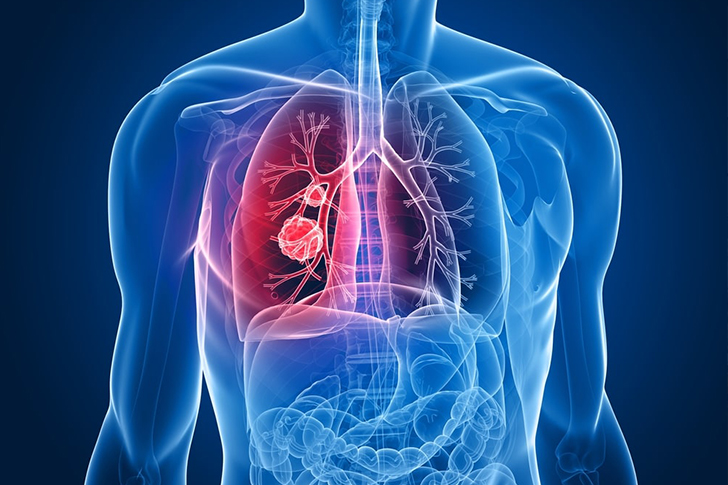Crucial Details About Lung Cancer Every Person Should Know
Lung cancer, a leading cause of cancer deaths worldwide, demands a deep understanding of its development and impact. This overview explores five key aspects of the disease, supported by recent data and research, to illuminate its complexities and preventive measures.

1. Understanding the Different Types of Lung Cancer
Lung cancer is primarily divided into two main types: non-small cell lung cancer (NSCLC) and small cell lung cancer (SCLC). NSCLC is the more common of the two, accounting for about 85% of all cases, and it generally grows and spreads more slowly than SCLC. Within NSCLC, there are three main subtypes: adenocarcinoma, squamous cell carcinoma, and large cell carcinoma. Each type originates from different types of lung cells and therefore, may require different treatment approaches.
SCLC, comprising about 10-15% of lung cancer cases, is more aggressive and spreads more rapidly. This distinction is crucial for treatment strategies and often affects prognosis.
2. Risk Factors for Lung Cancer
The leading cause of lung cancer is long-term exposure to tobacco smoke, which contributes to about 85% of all lung cancer cases in the U.S. However, non-smokers can also develop lung cancer; this can result from exposure to radon gas, secondhand smoke, asbestos, air pollution, and other carcinogens. Genetic factors also play a role, with some individuals genetically predisposed to developing lung cancer.
Age is another significant risk factor; the disease is most commonly diagnosed in people aged 65 or older, with a median age at diagnosis of about 70 years. Therefore, understanding and limiting exposure to these risk factors can significantly impact lung cancer rates.
3. Symptoms and Diagnosis of Lung Cancer
Early detection of lung cancer is often difficult due to the subtle and generally non-specific nature of the symptoms in its initial stages. Many individuals with early-stage lung cancer may not exhibit any symptoms at all, or they might display symptoms that are easily mistaken for less serious health issues, such as a cold or respiratory infection.
As the disease progresses to more advanced stages, the symptoms become more pronounced and diverse, significantly impacting the patient’s quality of life and overall health. Some of the more common symptoms include:
- Persistent Cough: A cough that does not go away over time and becomes chronic is one of the most typical signs of lung cancer. This cough might be dry or might produce phlegm, and it often worsens over time.
- Changes in Cough Pattern: Individuals might notice significant changes in the chronic cough they already have. This could be an increase in frequency, severity, or a change in the sound of the cough.
- Coughing Up Blood: Hemoptysis, or coughing up blood, can vary from small traces of blood mixed with sputum to more significant amounts, indicating more extensive damage.
- Shortness of Breath: As tumors grow and obstruct air passages, or when fluid accumulates around the lungs (pleural effusion), it can cause difficulty breathing. This symptom may initially be noticed only during physical activity but can become more noticeable even during rest as the disease progresses.
- Chest Pain: Pain in the chest area can result from the growth of the tumor pressing on nerves and other structures within the chest. This pain may be persistent and increase with deep breathing or coughing.
- Hoarseness: Changes in voice or hoarseness can occur if the tumor affects nerves that control the vocal cords.
- Weight Loss and Loss of Appetite: Unexplained weight loss and a decrease in appetite are common in many types of cancer, including lung cancer, as the body’s metabolism changes in response to the disease.
- Fatigue: Persistent tiredness that does not improve with rest can be another sign, often due to the body’s resources being diverted to fight the cancer.
- Recurring Infections: Frequent respiratory infections like bronchitis or pneumonia can occur if lung cancer blocks air passages, making it difficult to clear out fluids and pathogens.
4. Treatment Options Available
Treatment varies depending on the type, stage, and spread of lung cancer, as well as the patient’s overall health. Common treatments include surgery to remove the tumor, radiation therapy, chemotherapy, targeted therapy, and immunotherapy. Emerging treatments that target specific molecular aspects of cancer cells, known as precision medicine, have shown promise in improving outcomes and reducing side effects.
Moreover, the combination of treatments can often extend life and improve quality of life. Clinical trials continue to be a vital avenue for gaining access to the latest treatments before they are widely available.
5. Prognosis and Survival Rates
Survival rates for lung cancer vary widely depending on the stage at diagnosis. According to the American Cancer Society, the overall 5-year survival rate for lung cancer (for all stages combined) is about 25%. However, when detected at an early stage, the survival rate improves significantly; for localized NSCLC, the 5-year survival rate is about 63%. Unfortunately, only about 16% of lung cancers are diagnosed at this early stage, highlighting the critical need for increased awareness and screening.
These rates also vary by race, gender, and age; younger individuals and women tend to have a better prognosis than older individuals and men. The survival rates also differ geographically and by socioeconomic status, which points to disparities in access to care and health literacy.







Recent Comments